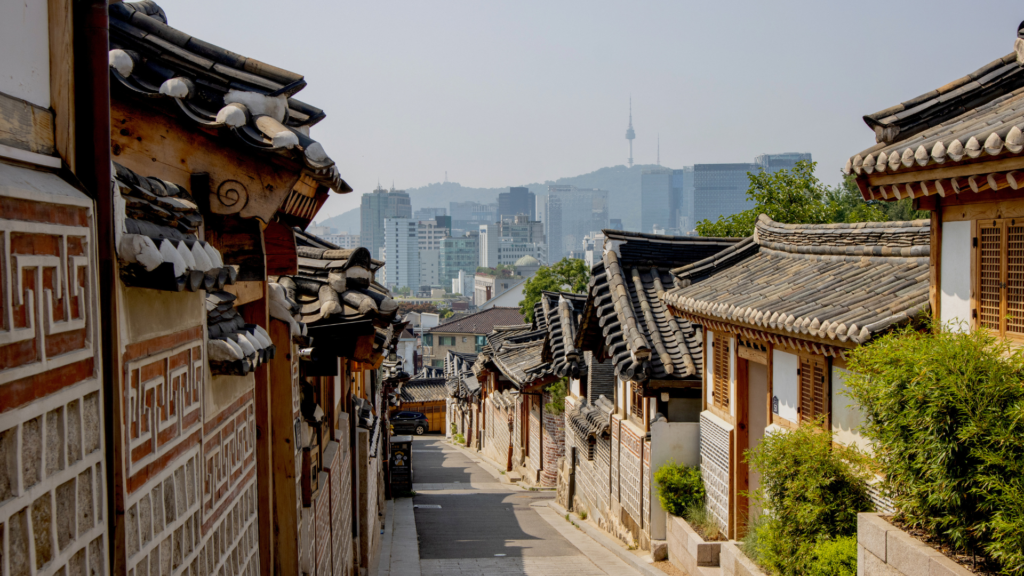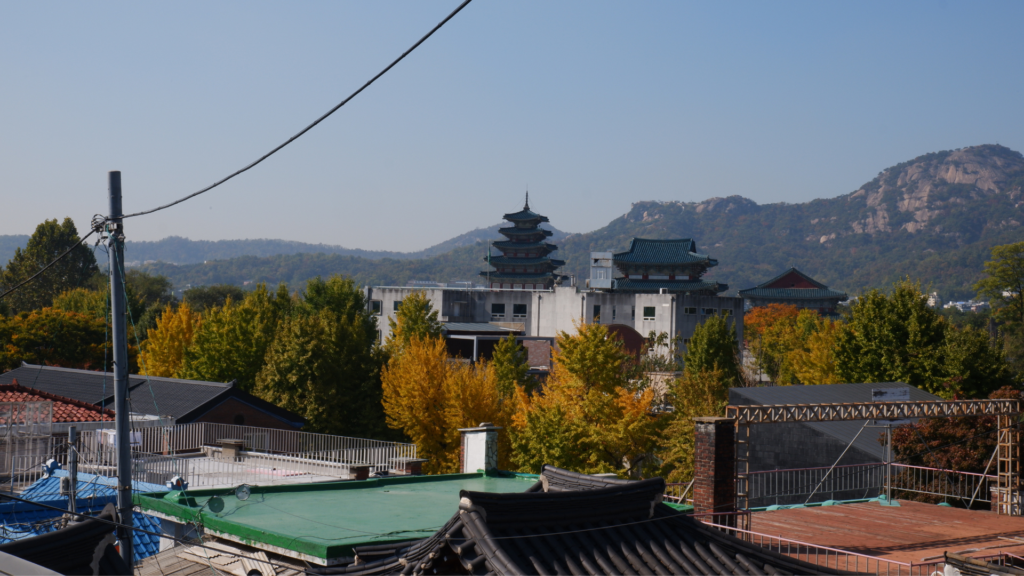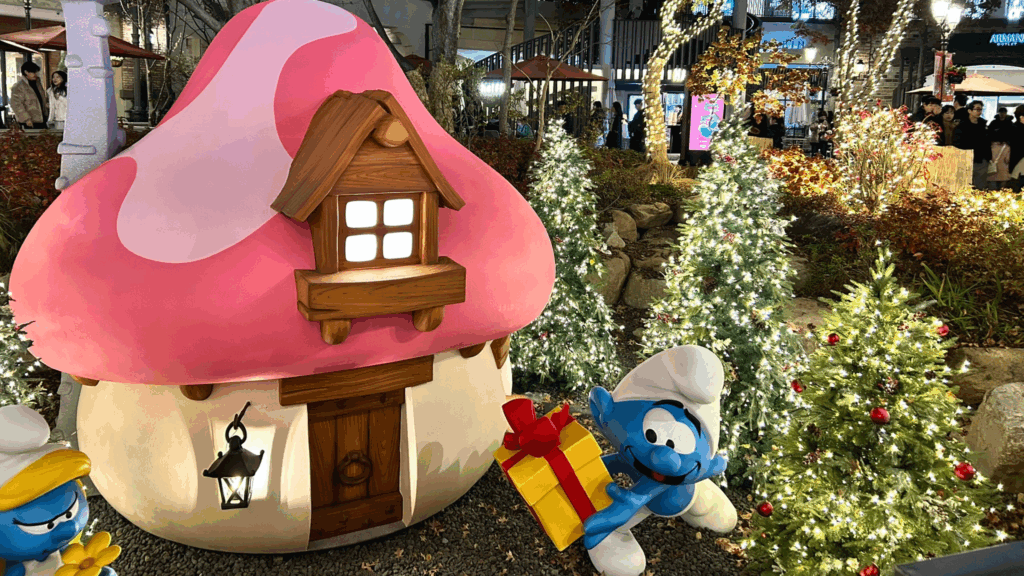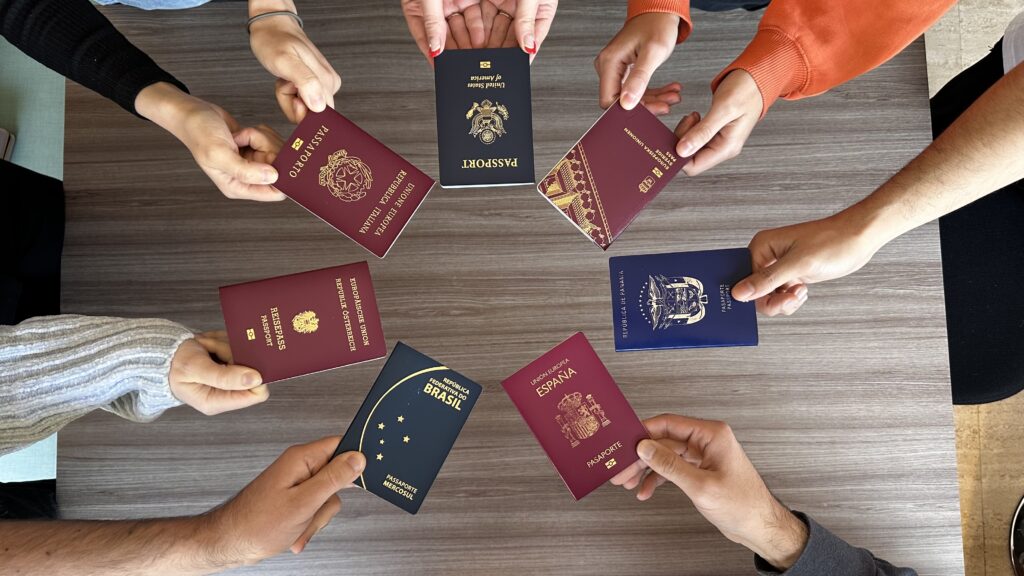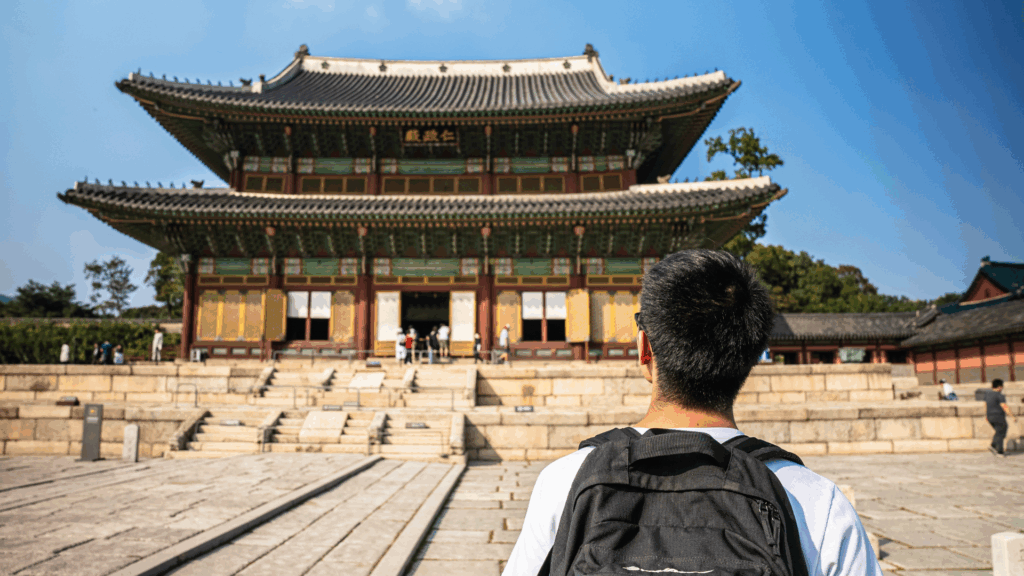Hanok villages in Korea showcase traditional Korean architecture featuring wooden houses with curved roofs, stone floors, and natural materials. These villages, dating back to the Joseon Dynasty, offer a glimpse into Korea’s cultural heritage, with preserved homes and cultural activities like tea ceremonies and traditional crafts. Hanok villages are a peaceful blend of history and nature, often set against modern cityscapes, and provide an immersive experience of Korea’s past. Let’s take a look at the top 5 most popular hanok villages in Korea you have to visit!
Here are the top 5 hanok villages in Korea

1. Ikseondong hanok village (익선동 한옥마을)
Ikseondong hanok village is a lively and trendy district that beautifully marries the charm of traditional hanok architecture with modern, creative energy. Located in the heart of Seoul, it’s one of the most unique hanok villages in Korea, known for its eclectic blend of history, art, and youthful vibrancy.
Originally a residential area for aristocrats during the Joseon Dynasty, the neighborhood experienced significant urbanization in the 20th century. However, in recent years, it has been revitalized, with many of its historic hanok houses being carefully restored and repurposed for contemporary use.
Today, visitors can explore Ikseondong’s narrow alleyways, where traditional hanok homes coexist with trendy cafes, restaurants, boutiques, and guesthouses. As there are plenty of cafes and places to explore, expect to spend at least half a day at Ikseondong!
Its proximity to other major attractions, such as Gyeongbokgung Palace, Changdeokgung Palace, and Insadong, makes it an excellent addition to any itinerary. Whether you’re interested in history, or culture, or simply enjoying a unique urban space, Ikseondong offers an unforgettable experience in one of the most cherished hanok villages in Korea.
Closest subway station: Jongno 3-ga station (종로3가 역) on line 5
2. Namsangol hanok village (남산골 한옥마을)
Namsangol hanok village is one of the most captivating traditional hanok villages in Korea located at the base of Namsan Mountain in central Seoul. The village, which opened to the public in 1998, was carefully restored to preserve the authentic architecture and atmosphere of a typical Korean village.
Interested to tour hanok homes owned by affluent families? Visit the Gim Chunyeong’s house in Samcheong-dong, the Min family’s house in Gwanhun-dong, and the Yun family’s house in Ogin-dong! They are traditional hanok homes, which were once inhabited by upper-class families, offering visitors a rare opportunity to step back in time and experience the historical Korean way of life.
The village also offers hands-on cultural experiences, such as archery, folk games, and traditional craft workshops, allowing visitors to engage with Korean heritage in a meaningful and interactive way. For more information, click here.
The village is especially notable for its serene and tranquil setting as it is less commercialized compared to other hanok villages in Korea, offering a peaceful retreat from the bustling city. Its combination of historical authenticity, natural beauty, and cultural richness makes Namsangol hanok village a distinctive and memorable destination for anyone exploring hanok villages in Korea.
Closest subway station: Chungmuro station (충무로역) on line 3
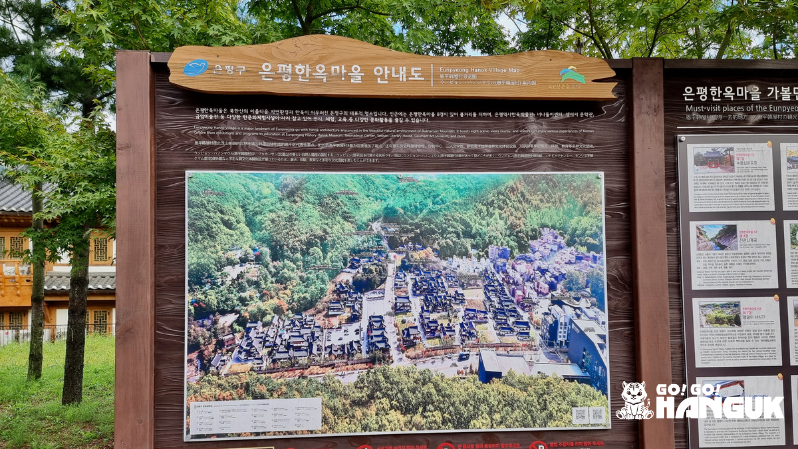
3. Eunpyeong hanok village (은평 한옥마을)
One of the newer hanok villages in Korea you can visit is the Eunpyeong hanok village, nestled at the foot of Bukhansan Mountain in northern Seoul. Opened in 2013, the village features over 200 restored Joseon Dynasty-style hanok homes, many of which serve as modern living spaces while preserving the essence of traditional Korean design.
Visitors to Eunpyeong hanok village can explore its picturesque streets, which are lined with charming cafes, boutique shops, and traditional restaurants. This village maintains a slower, quieter ambiance where visitors can truly appreciate the beauty of hanok homes along with the majestic Bukhansan Mountain. The village also offers a range of cultural activities, including workshops on traditional crafts like hanji (Korean paper) making and traditional embroidery.
To learn more about the historical and architectural significance of the area, take a trip to the Eunpyeong History & Hanok Museum. If visitors wish for a deeper cultural immersion, they can stay in one of the hanok guesthouses within the village, experiencing traditional living with modern amenities.
With its peaceful atmosphere, integration of modern design, and close proximity to nature, Eunpyeong hanok village offers a distinctive and tranquil experience that stands out among the other hanok villages in Korea, providing a perfect blend of heritage, culture, and relaxation.
Directions from Seoul:
- At Seoul station, head to platform 6 and take bus 701.
- Alight at Hana High School bus stop and walk to Eunpyeong hanok village.
4. Jeonju hanok village (전주 한옥마을)
One of the most iconic and vibrant hanok villages in Korea, Jeonju hanok village is located in the heart of Jeonju City. This charming village is home to over 800 beautifully preserved Joseon-era hanok houses, giving visitors a true taste of traditional Korean architecture and culture. Jeonju hanok village perfectly blends history with modern life, offering a lively atmosphere where the old and new coexist. It’s a must-visit destination for anyone eager to step back in time while still enjoying the buzz of a thriving city.
The village isn’t just about stunning architecture—it’s also a food lover’s paradise, especially if you’re a fan of bibimbap, Korea’s beloved rice dish, which originated here. Strolling through the village, you’ll find cozy restaurants, traditional tea houses, and street food stalls serving up local delicacies. Beyond the food, the village is packed with art galleries, artisan shops, and cultural centers like the Jeonju Traditional Culture Center, where visitors can dive deeper into Korean crafts and history. Don’t miss the Gyeonggijeon Shrine, a peaceful spot that adds a historical layer to your visit.
For a fully immersive experience, try on a hanbok (traditional Korean dress) and stroll through the village, feeling like you’ve stepped into another era. The village also comes alive with festivals throughout the year, like the colorful Jeonju Hanok Village Lantern Festival, where you can join in on traditional celebrations. Whether you’re enjoying the food, the architecture, or the lively atmosphere, Jeonju hanok village offers an unforgettable experience and is one of the most exciting hanok villages in Korea to explore.
Directions from Seoul:
- Take KTX from Seoul station to Jeonju station.
- At Jeonju station Cheonmajunggil bus stop, board buses 520, 541, 511, or 521.
- Alight at Girin Daero Military Manpower Administration and walk about 10 minutes to Jeonju hanok village.

5. Gyeongju Gyochon traditional village (경주 교촌마을)
Gyeongju Gyochon traditional village is a hidden gem among hanok villages in Korea, offering a step back in time to the heart of Korea’s Silla Dynasty. Located in Gyeongju, the ancient capital of Korea, this village is home to a beautifully preserved collection of traditional hanok houses, set against the backdrop of rolling hills and serene landscapes. Gyochon is unique in that it not only showcases traditional Korean homes but also provides a glimpse into the lives of the yangban (noble class) who once inhabited the area, making it a fantastic destination for history buffs and culture enthusiasts alike.
Walking through Gyochon feels like stepping into a living history book. The village is a haven for those seeking a slower pace, with narrow alleys, beautiful tile-roofed hanoks, and traditional gardens. Visitors can explore the Gyeongju Folk Village Museum to learn about the customs, tools, and daily life of ancient Korea, or simply enjoy the calm, rustic beauty of the area. Gyochon is especially famous for its association with the Choi family, one of the most prominent families during the Silla era, and you can visit the well-preserved Choi Clan House to get a glimpse into noble family life.
Beyond the cultural immersion, Gyeongju Gyochon Traditional Village offers a taste of traditional Korean cuisine, with local dishes that have been passed down for generations. Try the famous Gyeongju bread, a sweet pastry filled with red bean paste, or sip on traditional tea at one of the village’s tea houses. Whether you’re wandering through the ancient lanes, learning about the Silla Dynasty, or sampling local treats, Gyochon offers a truly authentic experience that stands out among other hanok villages in Korea.
Directions from Seoul:
- Take KTX from Seoul station to Gyeongju station.
- At Gyeongju station, take buses 60 or 61.
- Alight at Nambu Church bus stop and walk to Gyeongju Gyochon traditional village.
Here, we conclude our top 5 most popular hanok villages in Korea! Come visit these places yourself and if you wish to find out more about living and studying in Korea, be sure to contact us or keep updated on our Go! Go! Hanguk blog for more content.
